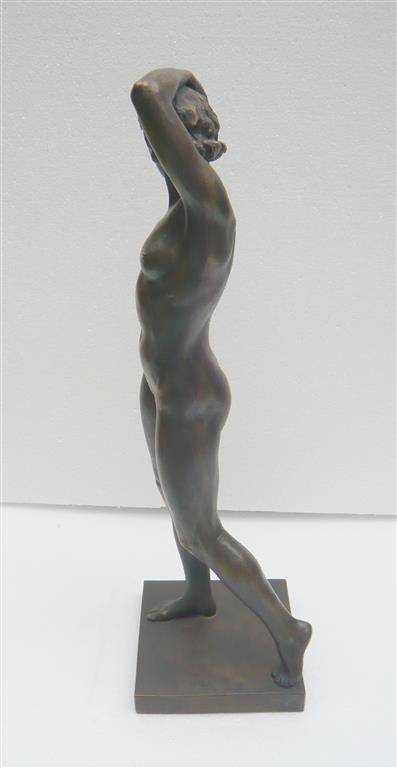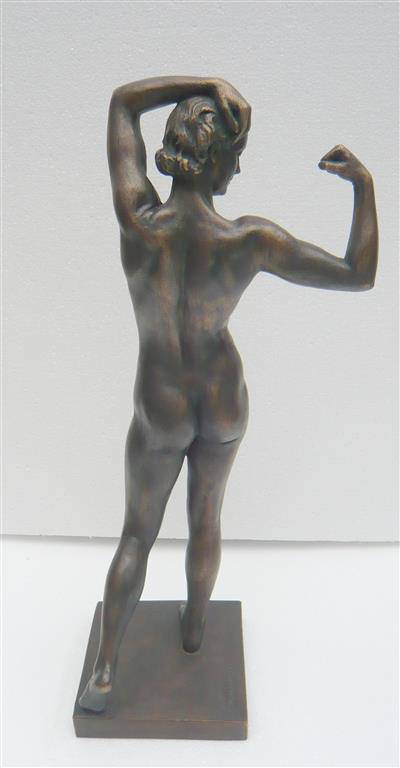Woman Gymnast
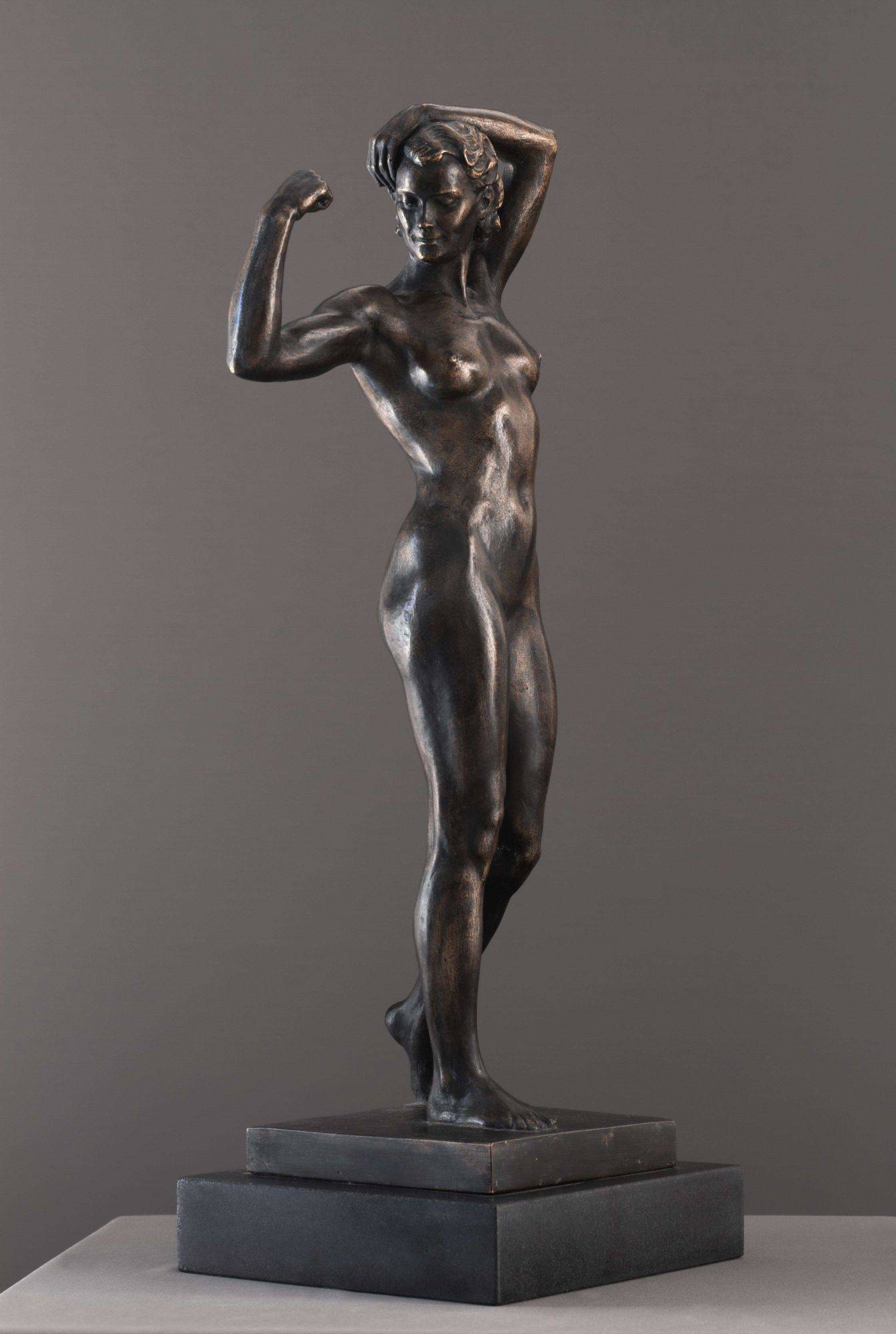
Manizer, Matvej Genrikovich
1891 - 1966
Woman Gymnast
Bronze
57 (high) x 25 (wide) x 17 (deep)cm
1947
Signed
PROVENANCE:
Collection of the family
LITERATURE:
Certificate from the family
The larger version of this famous bronze is in the Tretyakov gallery. Our version was the artist's copy and remained with his family.
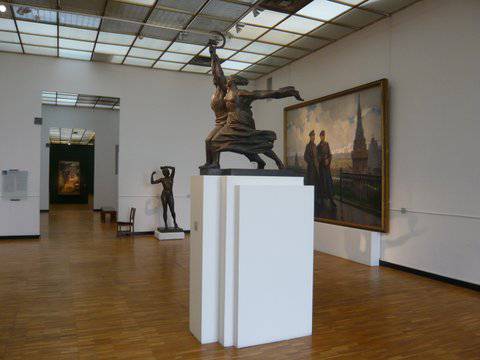
Manizer's Woman Athlete in the Treyakov Gallery alongside Vera Muhkina and Aleksandr. Gerasimov.
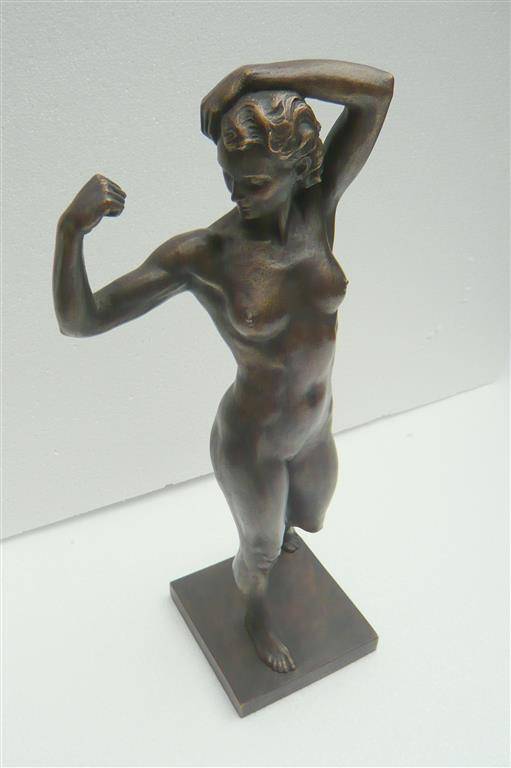
From above
Side view
Rear view
Out of the leading Russian sculptors of the Soviet period Manizer was the most classical and he was particlularly interested in trying to create perfect form. Woman Athlete of 1947 combines his interest in :- the classical sculpture of ancient Greece, an idealised woman and the health and strength of a Russian gymnast. It was a sign of his considerable status at that time that he was allowed to portray this woman in the nude. The nude has always been an important part of the Russian tradition but the Soviet Elite post WWII was quite prudish in their public if not their private lifes. Manizer manages to to show the strength of the woman without losing her femininity.
Bronze was very expensive at this date and Manizer, due to his sucess with public commissions, and his position as heading up the Sculpture Academies, was one of the few sculptors who could afford to make his own artist's copy of his public commissions, as in our version under discussion. His private copy is about half the size of the Tretyakov version. Manizer also carved her (half size again) out of marble but he didnt finish her off, perhaps intentionally, and so this version remains two dimensional and half emerges from the stone.
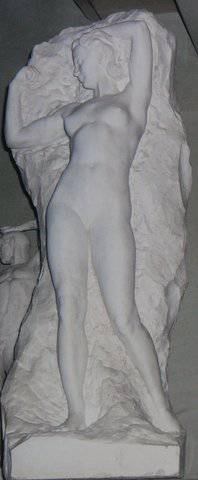
In Marble
Manizer was one of the leading sculptors of the Soviet period alongside Shadr, Mukhina, Vuchetich and Konenkov. He was born in St. Petersburg. As a student Manizer attended the State Artistic and Industrial Academy there, and the art school of the Peredvizhniki from 1911 through 1916. From 1926 he was a member of the Association of Artists of Revolutionary Russia. In 1941 he moved to Moscow.
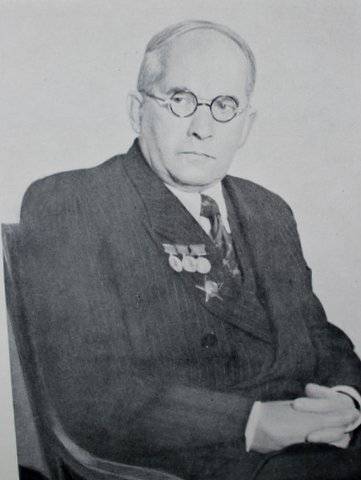
Matvej Manizer
Working in an academic and realistic style, Manizer produced a great number of monuments situated throughout the Soviet Union, including some twelve portrayals of Lenin. Manizer was awarded the People's Artist of the USSR (1958), Member of USSR Academy of Arts (1947), vice president of USSR Academy of Arts (1947-1966), chairman of the Saint Petersburg Union of Artists from 1937 to 1941, and winner of the Stalin Prize three times.
Manizer's wife Elena Alexandrovna Yanson-Manizer (1890-1971) was a sculptor in her own right, with work at the Dynamo station of the Moscow Metro. Their son Hugh Matveyevich Manizer (born 1927) is a noted painter. Among Manizer's students was the Stalin Prize-winning Fuad Abdurakhmanov.
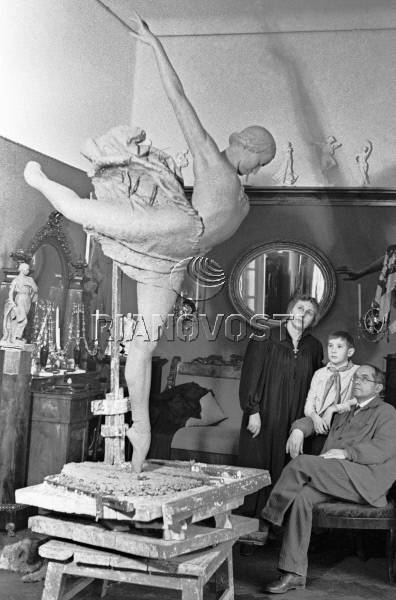
The artist with his wife and son admiring his wife's sculpture of ballerina Ulanova
Manizer is buried in the Novodevichy Cemetery of Moscow.
Work
- an elaborate multi-figure monument to Ukrainian poet and humanist Taras Shevchenko in Kharkiv, Ukraine
- monument to the victims of the 1905 Bloody Sunday massacre in St. Petersburg, Frunze District, St. Petersburg, 1932
- multifigure equestrian monument to Red Army commander Vasily Chapayev, Samara. 1932
- 80 bronzes of Soviet citizens for the Revolution Square station of the Moscow Metro, 1938
- monument to Soviet figure Valerian Kuybyshev, Samara, 1938
- monument to Lenin in Ulyanovsk, 1941, awarded Stalin Prize second class
- bronze sculptures of the Hero of the Soviet UnionMatvey Kuzmin and the Soviet military martyr Zoya Kosmodemyanskaya, in the Partisanskaya station of the Moscow Metro, 1943, awarded Stalin Prize first class
- monument to the Metro builders, Electricity Factory station of the Moscow Metro, 1944
- monument to Ivan Pavlov in Ryazan, 1950, awarded Stalin Prize second class
References

